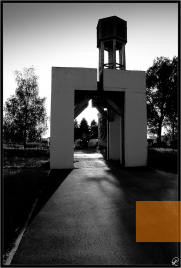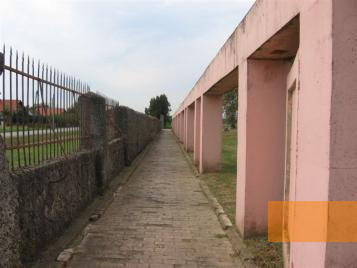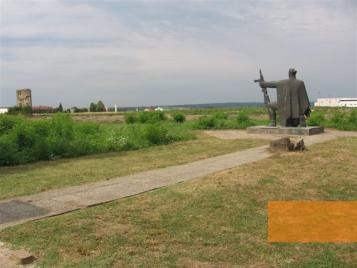A memorial complex in the north Croatian town of Koprivnica, which lies in the historical region of Slavonia close to the Hungarian border, recalls the prisoners of the Danica camp. From 1941 to 1942, the Ustaša incarcerated several thousand people in the industrial area of Danica.
In April 1941, the Axis powers invaded Yugoslavia. The occupiers broke up the state. The fascist Ustaša movement proclaimed the Independent State of Croatia (Croatian: Nezavisna Država Hrvatska)in the area that today covers Croatia and Bosnia-Herzegovina. Soon, the new regime established camps all over the country, mainly for incarcerating Serbs, Jews and Roma. Many of these prisoners were later murdered.
The first Ustaša camp was established already on April 15, 1941, in the town of Koprivnica. The local Ustaša militia used the empty buildings of the »Danica« chemical plant to accommodate prisoners, mostly Serbs. Food supplies were scant, and the inmates were frequently tortured or abused. Some of the prisoners were deployed in forced labour: they had to fill in anti-tank trenches which had been dug up by partisans. In May 1941, there were about 1,000 prisoners in Danica – until mid-August, occupancy rose to 2,600. From the summer of 1941 on, the Ustaša deported the Danica inmates to other camps, primarily to Jasenovac, where most of them were murdered. Until May 1942, all of the political prisoners, Serbs and Jews were transferred to other camps. A majority of the prisoners remaining in Danica were convicts. On September 1, 1942, the Danica camp was dismantled.
The first Ustaša camp was established already on April 15, 1941, in the town of Koprivnica. The local Ustaša militia used the empty buildings of the »Danica« chemical plant to accommodate prisoners, mostly Serbs. Food supplies were scant, and the inmates were frequently tortured or abused. Some of the prisoners were deployed in forced labour: they had to fill in anti-tank trenches which had been dug up by partisans. In May 1941, there were about 1,000 prisoners in Danica – until mid-August, occupancy rose to 2,600. From the summer of 1941 on, the Ustaša deported the Danica inmates to other camps, primarily to Jasenovac, where most of them were murdered. Until May 1942, all of the political prisoners, Serbs and Jews were transferred to other camps. A majority of the prisoners remaining in Danica were convicts. On September 1, 1942, the Danica camp was dismantled.
According to a commission established after the war, entrusted with the task of investigating the crimes of the occupying forces and their helpers, about 5,600 prisoners passed through the Danica camp between 1941 and 1942. Although no executions or deliberate killings took place, some 200 to 300 prisoners died of the terrible conditions they were subjected to. Over 3,000 former prisoners of the Danica camp were murdered by members of the Ustaša, mostly in the camps at Jasenovac and Stara Gradiška. In total, about 3,000 Serbs, 1,000 Croats, over 600 Jews and about 400 Roma were incarcerated at Danica.
The memorial complex at the site of the former Danica camp in Koprivnica consists of several elements: a water tower, a sculpture depicting gallows, a memorial plaque and a monumental statue of a partisan. The »Gallows« sculpture, dedicated in 1981, was designed by architect Lenko Pleština. During the Yugoslav wars in the 1990s, the memorial complex was damaged. In 2006, the premises were restored and opened to the public again.
- Name
- Spomen područje Danica
- Phone
- +385 (0)48 622 564
- Fax
- +385 (0)48 222 872
- Web
- http://www.muzej-koprivnica.hr/danica/
- uprava@muzej-koprivnica.hr
- Possibilities
- Staff of the city museum give tours of the site





